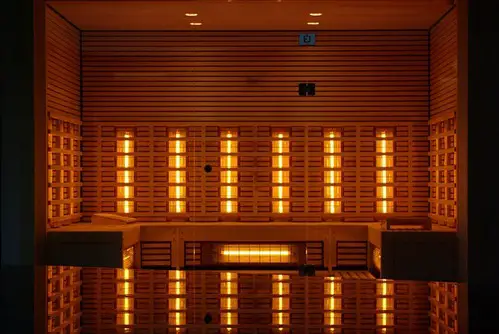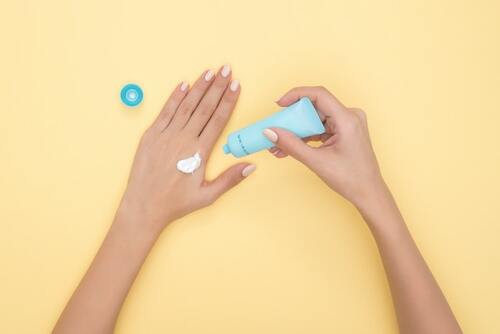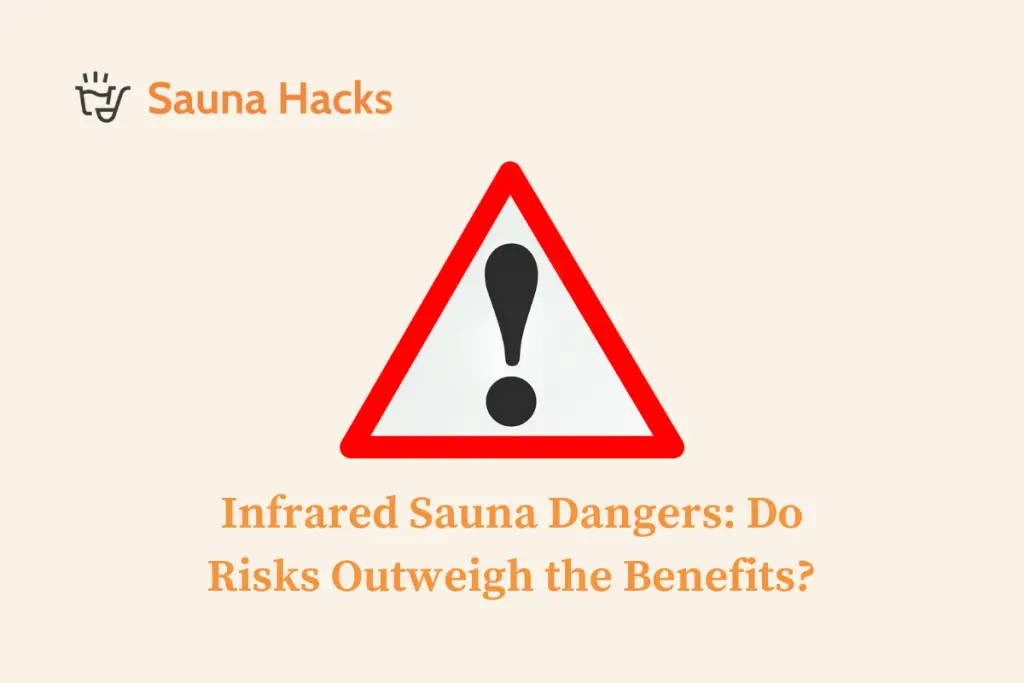Sun protection is essential for maintaining healthy skin and avoiding harmful ultraviolet (UV) rays. But when it comes to infrared saunas, many people wonder if sunscreen is necessary. Infrared saunas utilize a different wavelength of light compared to sunlight, offering a unique heat therapy experience. Are you fully protected from potential damage, or should you still reach for that sunscreen before stepping in?
Understanding the difference between UV and infrared light is crucial. While UV radiation from the sun can damage your skin and cause sunburn, infrared light is a gentler, more skin-friendly form of energy that penetrates your tissues without inducing sunburn or other harmful effects. Thus, the need for sunscreen in an infrared sauna is not as pressing as when you’re outdoors exposed to sunlight.
However, you may still have some concerns about safety and skin health. It’s important to note that while infrared saunas are generally considered safe, you should closely monitor your body during use. Observe how your skin reacts and be cautious with the frequency and duration of your sessions. By following these precautions, you can make an informed decision on whether or not sunscreen is necessary for your infrared sauna experience.
Table of Contents
- Difference Between Infrared Sauna & Sun Rays
- Can Infrared Saunas Cause Skin Cancer?
- Do You Need Sunscreen for Infrared Sauna?
- Does Sunscreen Block Infrared Light?
- Tips for Preparing Your Skin for Infrared Sauna
- Conclusion
Difference Between Infrared Sauna & Sun Rays
Infrared saunas and sun rays both emit infrared light, but they have some crucial differences in how they affect your body. While both can provide benefits, understanding these distinctions is essential when deciding if you need sunscreen in an infrared sauna.
Infrared saunas use infrared waves to directly heat your body, raising your core body temperature and promoting blood flow. There are three types of infrared wavelengths: near, mid, and far infrared. Infrared saunas typically use far-infrared wavelengths, which are commonly referred to as far-infrared saunas. These wavelengths can penetrate the skin, providing therapeutic benefits without raising the ambient air temperature.
Sun rays, meanwhile, contain a broader range of light wavelengths, including visible light, ultraviolet (UV) rays, and infrared light. While infrared light from the sun can also provide warmth, its UV rays are responsible for most sunburns and skin damage. Prolonged exposure to UV rays can lead to an increased risk of skin cancer and premature aging.
An important thing to note is that infrared saunas do not emit UV rays. The heat generated by infrared saunas is not the same as the heat from traditional steam saunas, which require higher temperatures and produce steam.
Since infrared saunas don’t produce UV rays, sunscreen isn’t necessary during an infrared sauna session. However, it’s still a good idea to keep your skin moisturized and hydrated before, during, and after a session.
While Sunlighten Saunas use invisible infrared wavelengths to provide health benefits like improved blood circulation, detoxification, and muscle relaxation, they don’t expose you to the harmful effects of the sun’s UV rays. This makes infrared saunas a safer alternative to sunbathing when you’re looking for the warming sensation and therapeutic benefits of natural light.
In conclusion, understanding the differences between infrared saunas and sun rays is crucial when deciding on the need for sunscreen. Infrared saunas offer various benefits without the risk associated with UV rays, making them a valuable addition to your wellness routine.
Can Infrared Saunas Cause Skin Cancer?

When using an infrared sauna, you might wonder about the potential risks, specifically the risk of skin cancer. Infrared saunas use infrared light to heat your body, a different method than traditional saunas which rely on steam and hot air. Infrared light is a type of radiant heat that is safe for the human body and does not cause sunburn or direct skin damage like ultraviolet (UV) rays.
While infrared light itself is not known to directly cause skin cancer, it’s important to remember that heat can still have an impact on your skin’s health. According to the Health Physics Society, increased skin temperature can reduce DNA repair efficiency and promote skin cancer that is initiated by other agents. Repeated infrared exposures may also lead to increased skin thickness, which could potentially affect overall skin health.
Infrared saunas come in different forms – far infrared, near-infrared, and red light therapy. All of these types use different wavelengths of infrared radiation and provide various health benefits, such as reduced pain, improved circulation, and wound healing. However, it’s crucial to follow proper usage guidelines and not overexpose yourself to excessive heat or infrared light during your sauna sessions.
Despite the potential risks, some research suggests that infrared saunas may provide certain health benefits. Several studies have shown potential improvements in conditions like high blood pressure, heart failure, dementia, Alzheimer’s disease, and arthritis due to infrared sauna use. Nevertheless, larger and more precise studies are required to confirm these findings.
In conclusion, while infrared saunas do not directly cause skin cancer, it’s essential to practice caution and adhere to the recommended guidelines during your sessions. Wearing sunscreen in an infrared sauna isn’t necessary, as the infrared light does not damage the skin like UV light. However, make sure you’re enjoying the therapeutic benefits of infrared sauna therapy responsibly and in moderation.
Do You Need Sunscreen for Infrared Sauna?

Infrared saunas provide various health benefits, such as pain relief, improved circulation, and relaxation. They work differently than traditional saunas, using infrared light to directly heat your body rather than heating the surrounding air. Near-infrared and far-infrared waves penetrate the human tissue, providing a deep, therapeutic heat.
When you’re using an infrared sauna, your skin is exposed to infrared radiation, which is not the same as ultraviolet (UV) radiation. UV rays can be harmful to your skin, leading to sunburn, melasma, and premature aging. However, infrared radiation doesn’t carry the same risks as UV radiation. Consequently, there’s no need to apply sunscreen before an infrared sauna session.
Maintaining healthy skin is still essential during infrared sauna therapy. It’s important to listen to your body and adjust the sauna’s temperature and duration accordingly. Don’t stay in the infrared sauna for too long, as prolonged exposure to heat can dehydrate your skin and lead to discomfort. Remember to stay hydrated and moisturize after the session to maintain your skin’s health.
In summary, sunscreen isn’t necessary for an infrared sauna session, as the infrared light doesn’t pose the same risks as UV rays. Instead, focus on staying hydrated, listening to your body, and maintaining overall skin health. Keep in mind that infrared saunas are a form of therapy and should be used responsibly for optimal benefits.
Does Sunscreen Block Infrared Light?
When discussing sun protection, you should be aware that different types of light can affect your skin. Most sunscreen products primarily protect you against UVA and UVB rays, which are known to cause skin damage and increase the risk of skin cancer. However, infrared light is another type of light that you might encounter, especially in an infrared sauna setting.
Infrared radiation consists of longer wavelengths than visible light and is responsible for the heat you feel in sunlight or from an infrared sauna. While infrared light has been linked to skin aging and other potential risks, it is important to note that traditional sunscreens do not block infrared light effectively.
Some products claim to offer infrared protection, but the effectiveness of these sunscreens remains debatable. A better approach to shielding your skin from infrared radiation is to use physical barriers like UPF clothing or seek shade. Moreover, experts recommend focusing on protecting your skin from UVA and UVB rays, as these types of light have a more significant impact on skin health and pose greater risks, such as skin cancer.
Red light therapy, which utilizes near-infrared (NIR) light, is commonly used in infrared saunas, offering potential benefits for skin health, pain relief, and more. Though there is no specific recommendation for applying sunscreen during red light therapy or using an infrared sauna, it is crucial to follow the guidelines given by the red light therapy or infrared sauna provider to ensure the best results and your safety.
To summarise, sunscreen is primarily designed to protect your skin against UVA and UVB rays, which are known to cause skin damage and increase the risk of skin cancer. Sunscreens may not offer sufficient protection against infrared light, and you should rely on other strategies, such as UPF clothing or seeking shade, to shield your skin from infrared radiation exposure.
Tips for Preparing Your Skin for Infrared Sauna
Before you start your infrared sauna session, it’s essential to prepare your skin properly. Following these simple steps will help you maximize the benefits of infrared sauna therapy and protect your skin.
First, make sure your skin is clean and free of dirt, oils, and makeup. Use a gentle cleanser to wash your face and body. This will allow the infrared light to penetrate your skin more effectively and facilitate better detoxification during the session.
Next, hydrate your skin with a lightweight, non-greasy moisturizer. This will help prevent dry skin, which can occur due to the intense heat in the sauna. Remember to avoid using heavy or oil-based creams, as they may clog your pores and reduce the infrared sauna’s effectiveness.
When it comes to sunscreen, infrared saunas don’t expose your skin to harmful UV radiation like traditional sunlight does, so it’s not necessary to apply sunscreen specifically for the infrared sauna session. However, it’s essential to protect your skin from UV rays before and after your session if you’ll be exposed to sunlight.
During the sauna session, ensure that you keep yourself well-hydrated by drinking plenty of water. Adequate hydration is crucial for reaping the benefits of infrared heat therapy like increased blood flow, muscle recovery, and detoxification.
Choose a proper sitting position to ensure that the infrared rays heat your entire body and penetrate your skin effectively. Poor posture may decrease blood circulation, negatively impacting your core body temperature and heart rate.
Finally, exfoliating your skin gently before the sauna session can promote improved circulation and skin purification. Use a bath brush or sauna whisk to softly stimulate your pores and enhance blood flow.
By following these tips, you’ll ensure that your skin is well-prepared for the infrared sauna and can enjoy the maximum possible benefits.
Conclusion
Infrared saunas can provide a range of health benefits, such as improved blood circulation, muscle recovery, and relaxation. However, when it comes to sun protection, the situation is different from traditional sun exposure or tanning beds.
You may wonder whether it’s necessary to apply sunscreen during an infrared sauna session. The good news is that infrared saunas use a different type of heat, which doesn’t involve the harmful ultraviolet (UV) rays that cause sunburn or skin damage. This means that there’s no need to use sunscreen during your sauna sessions.
It’s important, though, to follow the guidelines for safe infrared sauna use. Start with shorter sessions and gradually increase the time as your body gets used to the heat. Also, remember to cool down after your session and refrain from strenuous activities for at least 10-15 minutes.
To summarize, you can enjoy the benefits of an infrared sauna without the risk of sun damage, and there’s no need to apply sunscreen. However, always follow safety guidelines and consult your doctor if you have any concerns or underlying health conditions.
(Featured image by MSKIN Pro from Pexels)


